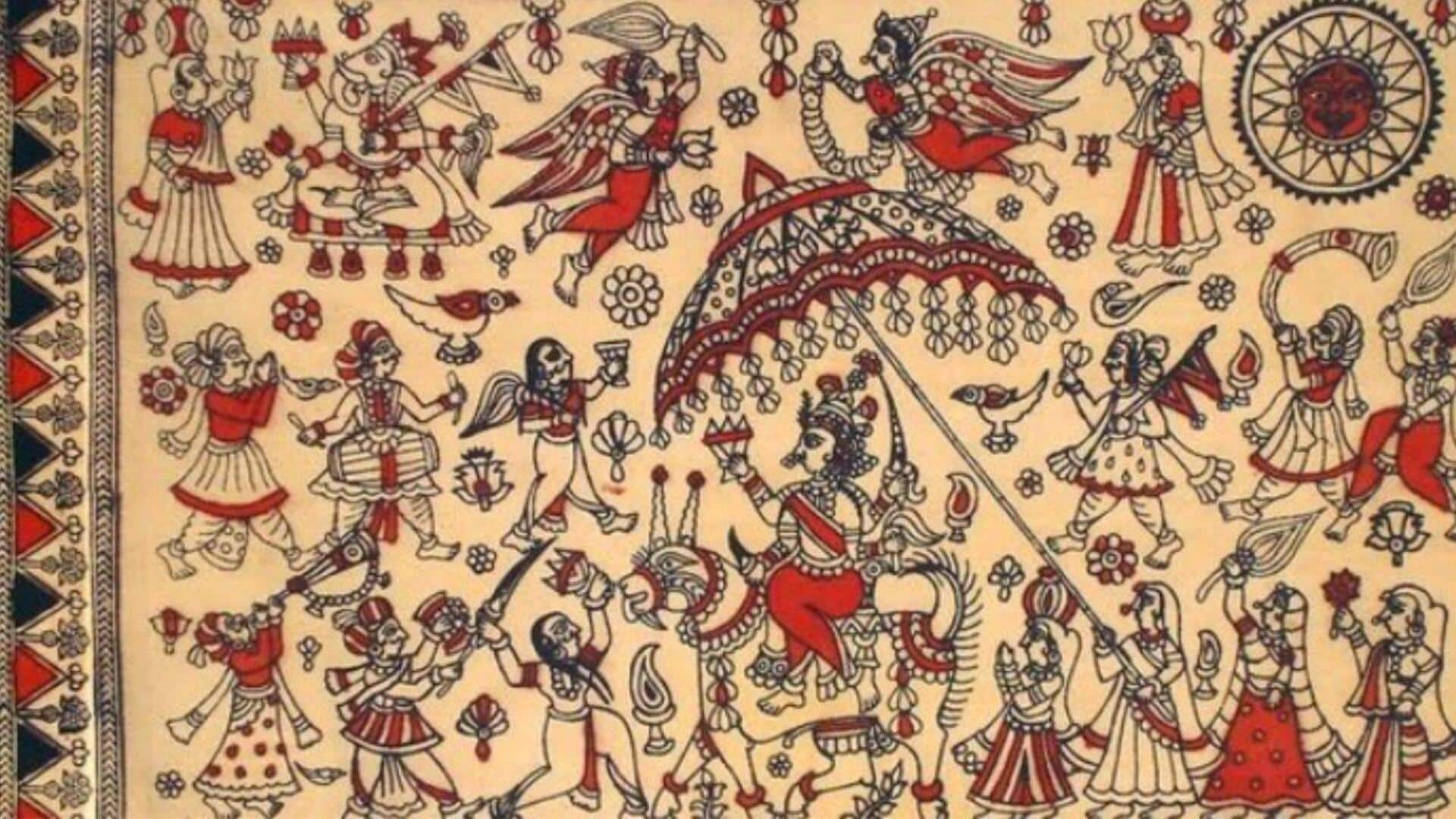
The story behind Gujarat's divine textile art: Mata ni Pachedi
What's the story
Mata ni Pachedi is a traditional textile art form from Gujarat, India. The craft is a unique blend of spirituality and artistry, with its intricate designs and vibrant colors. The art form is primarily practiced by the Khatri community, who use natural dyes to create these stunning pieces. Mata ni Pachedi is not just a craft but also a cultural heritage that reflects the rich traditions of Gujarat.
#1
Historical roots of Mata ni Pachedi
The history of Mata ni Pachedi dates back to the 19th century when it was used as a ritualistic cloth for local deities. The word "pachedi" means "behind" in Gujarati, as these textiles were hung behind idols during religious ceremonies. Over time, this practice evolved into an art form, with artisans developing their own styles and techniques.
#2
Unique techniques involved in creation
Creating Mata ni Pachedi involves several intricate steps. First, artisans sketch designs on cloth using natural dyes from plants and minerals. Then, they fill in these designs with vibrant colors, ensuring each piece is unique. The process requires great skill and patience, as mistakes are hard to correct on fabric.
#3
Cultural significance and symbolism
Mata ni Pachedi is not just an artistic expression, but a cultural emblem of Gujarat. The motifs used in the textiles are often inspired by mythology and folklore, telling stories through the fabric. These pieces are not just decorative, but also serve as a medium of storytelling, preserving cultural narratives for generations to come.
#4
Modern adaptations and market trends
In recent years, Mata ni Pachedi has gained popularity beyond traditional settings. Designers have incorporated its motifs into contemporary fashion and home decor items. This adaptation has opened new markets for artisans, while keeping the essence of this ancient craft alive.